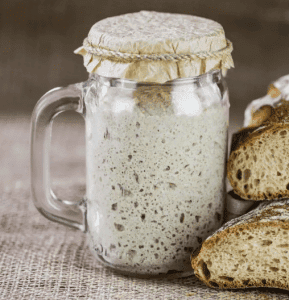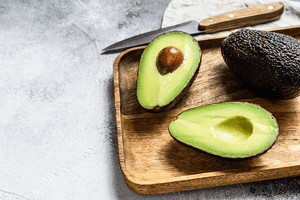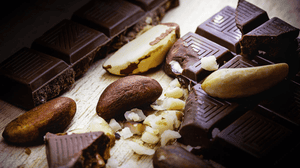

Meet the ferment*
History: Sourdough bread is considered the most ancient form of leavened bread. Historically, it is believed that the discovery of leavening was unintentionally made by the Egyptians. The innovative method of utilizing a 'sourdough starter' gained popularity, eventually making its way across Europe, the Middle East, and later on to America.What is it? Bread made using a live starter instead of yeast to help it rise.
Flavour profile: Sour and tangy
Traditional sourdough is a live culture of flour and water – this is called a ‘mother’ or ‘starter’ and contains a blend of bacteria called lactobacillus and yeast thriving together. A well-maintained starter can be kept for ages with minimal maintenance, you just need to feed it every now and again.
Method
Weigh the empty jar and make a note of the weight.
Day 1 – In a bowl combine 50g wholemeal flour, 50g strong white flour and 125g water (24°C). Add to the 500ml jar and cover with the two-part lid. Leave at room temperature for 24 hours.
Day 2 – Add 75g of starter mixture to a bowl (discard the rest), followed by 50g wholemeal flour, 50g strong white flour and 115g water (24°C). Mix well, return to the jar, cover and leave at room temperature for 24 hours.
Days 3 & 4 – Repeat day 2.
Day 5 – On day 5, increase the feed to twice a day. In the jar, discard the starter down to 75g, add 50g wholemeal flour, 50g strong white flour and 115g water (24°C). Mix well, cover and leave at room temperature for 12 hours. After 12 hours, repeat feed with same ratio of ingredients, set aside for 12 hours.
Day 6 – Repeat day 5.
Day 7 – On day 7, discard the starter down to 50g, add 50g wholemeal flour, 50g strong white flour and 100g water (24°C). After 12 hours, repeat feed with same ratio of ingredients, set aside for 12 hours.

Ingredients
- 500g wholemeal flour
- 500g strong white bread flour
- water
Equipment
- 500ml jar
- Two-part lid
- Digital scale
- Instant-read thermometer
- Spatula
Here's some helpful FAQs from The Gut Stuff
How do I maintain my starter when I am not baking?
If you are not baking on a regular basis, store your starter in the fridge until you are ready to. The cooler temperature will slow down the fermentation process and keep your starter ready for action.
My sourdough starter exploded! Is it ruined?
This is one of the less joyous pitfalls of fermentation! If left too long to its own devices (especially in an environment that’s a bit too warm) your starter can absolutely foam right out of its container. This doesn’t mean its ruined by any means. Try your best to salvage what still remains in the jar and use that as the 50g of starter to restart the feeding cycle.
How often should I feed my starter?
We recommend feeding the starter once a week whilst refrigerated. Feed it by first discarding all but 50g of the starter, then add 50g of wholemeal flour, 50g of strong white flour and 100g water. Stir the mixture together with a spoon before replacing it to the fridge.
I have a thin liquid on top, should I throw the starter in the bin?
This is often referred to as hooch and indicates the starter needs feeding, it will smell slightly acidic. Discard this liquid, scrape off the top layer and discard your starter so you are left with 50g and then feed your starter.
What flour should I feed my starter?
Once you have a healthy sourdough starter that has risen and fallen once, it is ok to switch the feeding flour. You can continue to feed with a mixture of wholemeal and strong white bread flour or even switch to using rye.
*Fermented foods may not be suitable for everyone, for example, if you are immunocompromised. Speak to your medical professional if you have any concerns.










